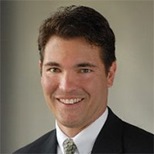by Paul Timm and Dorothy Scholnick — August 2017
Safety and sustainability
The Facility Manager’s (FM’s) role in sustainability involves identifying the environmental, social, and economic considerations that regularly affect FMs. The environmental and economic impacts are often quite easy to understand, yet the social impacts are less clear as the industry continues to explore the relationship between sustainability and social dimensions. In some cases, it is easy to make the connection—indoor air quality influences social well-being because human health is directly affected by the air we breathe, but what other ties to the social pillar can FMs impact? Although social impacts are complex, there seems to be a logical connection to make between FM strategic planning and social sustainability that has historically lacked a leading role in sustainability initiatives—occupant safety.
Sustainability is about conserving resources, yet the initiatives dedicated to the conservation and protection of human resources are often limited to health and safety standards. Regulatory codes and standards are typically slow to change and adapt to shifting environments and as such, are often less innovative in their application at individual sites. This very topic was investigated by an organization very familiar with the process of regulation, the U.S. Occupational Safety and Health Administration (OSHA) in their whitepaper Sustainability in the Workplace. As discussed in the whitepaper, the sustainability movement provides an ideal platform to promote enhanced occupant health and safety in an effort to protect human capital beyond minimal requirements.
One example to illustrate the link between sustainability and human safety is cited by an article published by OH&S; a few years ago, major northern cities installed energy-efficient traffic lights with LED bulbs to decrease energy consumption. The energy-efficient advantage of the bulbs was also the cause of a safety hazard; because they do not produce heat, the traffic lights cannot melt snow. As a result, the sun visors filled with blowing snow, obscuring the light. Until a new visor was developed, there were multiple accidents, some with fatalities. This link can also be seen in the workplace because although organizations must follow OSHA guidelines to maintain adequate working conditions; there are still scenarios where workers are put in harm’s way and injured on the job because potential safety hazards are an afterthought. In many cases when an employee incident is reported, leadership responds with a heightened emphasis on safety initiatives. Unfortunately, it is typical for those initiatives to fade out and decrease over time until the next incident happens again, and there is yet another spike in safety initiatives.
The historical problem is that safety is often viewed in a silo, when in fact it has a direct relationship with many sustainability initiatives already in place and should be considered during initial development. Workers play an integral role in the endurance of system processes and ensuring the well-being of occupants is arguably the highest priority for FMs. In this case, occupant safety is a business risk as well as a health risk. Facility safety programs should be designed in a sustainable way to promote continuous employee training and improvement in site safety in effort to be proactive rather than reactive to safety incidents.
Opportunities to improve safety
Fortunately, there are many opportunities to be proactive about occupant safety. For FMs, this involves improving the physical security within the facility and enhancing occupant safety programs. To be a truly sustainable facility, it is important to look beyond the minimal safety requirements. One of the most significant ways FMs can improve behavioral and procedural safety is through the development of a comprehensive facility security program. A program that enhances physical security measures and occupant training will minimize physical risks to occupants and building operations.
How to develop a sustainable security program
The first step in developing a security program involves a top-down security assessment to determine your baseline and position in safety initiatives based on your individual needs. A top-down security assessment aims to identify stakeholders, threats and responses to threats within your facility. Since threats and risks differ based on the type of organization and location of the building, organizations should begin by identifying their assets (in this case, building occupants), stakeholders and threats. Identifying stakeholders will determine who you need to involve in various phases of program development such as planning, implementing and training.
Stakeholders |
| ● In-house employees ● Outside contractors ● Visitors |
The baseline assessment process should include interviews with key personnel and questionnaires for building occupants to complete. The interviews should be targeted to specific personnel in an effort to gain feedback from at least one person within the different groups of stakeholders that occupy the building.
After stakeholders are identified, threats and responses to threats should be identified. These responses to threats determine how you are going to keep your occupants protected. Threats can be identified through resources such as incident records and local law enforcement agencies, as well as any previous incidents that may have occurred on site. Typical criminal activity should be considered as well as any potential internal hazards.
Threats |
Response to Threats |
| ● Outside intruders ● Internal hazards |
● Enhance physical security ● Train occupants |
The baseline assessment should include a visual inspection of the facility to identify threats based on the level of physical security in place. As detailed in A Holistic Approach to School Security, security threats can be mitigated in one of three ways: deterrence, detection, and delay. FMs should research possible security solutions in each of the three categories to determine which measures would benefit their location best based on a benefit-cost analysis and individual needs.
Security type |
Examples |
| Deterrence | Signs, enhanced lighting |
| Detection | Motion sensors, duress buttons |
| Delay | Doors and locks |
How to foster a sustainable workforce
To tie all your efforts together, threats and responses identified in the baseline assessment should be documented in your security program. The program should also include sections to cover:
- Management – policies and procedures that identify how access control is managed in the facility
- Building Security – products and systems for deterrence, detection and delay
- Violence Prevention and Intervention – education programs and resources that reduce the likelihood that risk factors will result in a violent outcome
- Staff Training – dedicated time to educate staff on security practices and procedures
- Emergency Response – develop evacuation, lockdown and shelter-in-place plans
- Crisis Management – develop management plans specific to your site and test effectiveness with planned drills and tabletop exercises
- Visitor Management – determine an established process for documenting and screening visitors to reduce risk of external attack, consider software solutions/badges
- “Insider” Management – consider access control systems with duress signals, video surveillance, and other methods to allow response to internal attack
Be sure to include national guidelines, industry best practices and proprietary tools in development of your security program. It is always recommended that FMs consult with resources from local law enforcement agencies, state/federal agencies, and/or product vendors for additional insight and expertise.
Once the security program is developed, it is critical that the plan is communicated with the identified stakeholders and building occupants. Instruction should also be scheduled for occupants and leaders to engage in training and preparedness exercises. Security conscious employees make a sustainable workforce and thus, it is important to include all stakeholders in the training. Organizations should include training for the Emergency Plan, Security Policies and Procedures, tabletop exercises, lockdown drills, and emergency preparedness exercises.
Conclusion
It takes time and thoughtful consideration to develop safety policies and select appropriate physical security measures. Development of a security program requires a mindset for continual improvement as needs will continue to change. When done in a collaborative manner, implementation of a sustainable security program can make a significant impact on the safety and well-being of occupants within your facility. Sustainability has been used as a platform for decision-making and transparency for many beneficial initiatives in the FM industry. The evolution of the sustainability movement provides the ideal opportunity to bring yet another beneficial initiative under the umbrella of sustainability; in this case, making the business case to protect the safety and well-being of human capital.
Resources
Sustainability in the Workplace: A New Approach for Advancing Worker Safety and Health. U.S. Occupational Safety and Health Administration, December 2016.
Taubitz, Mike. How Safety Fits with Sustainability. https://ohsonline.com/articles. September 2010.
Timm, Paul. A Holistic Approach to School Security. http://www.retasecurity.com/a-holistic-approach-to-school-security/.
About the authors
 Paul Timm, Vice President of Facility Engineering Associates, is a board-certified Physical Security Professional (PSP), the author of School Security: How to Build and Strengthen a School Safety Program, and a nationally acclaimed expert in school security. In addition to conducting numerous vulnerability assessments and his frequent keynote addresses, Paul is an experienced School Crisis Assistance Team volunteer through the National Organization for Victims Assistance (NOVA). He is a member of ASIS International’s School Safety & Security Council and the Illinois Association of School Business Officials’ Risk Management Committee.
Paul Timm, Vice President of Facility Engineering Associates, is a board-certified Physical Security Professional (PSP), the author of School Security: How to Build and Strengthen a School Safety Program, and a nationally acclaimed expert in school security. In addition to conducting numerous vulnerability assessments and his frequent keynote addresses, Paul is an experienced School Crisis Assistance Team volunteer through the National Organization for Victims Assistance (NOVA). He is a member of ASIS International’s School Safety & Security Council and the Illinois Association of School Business Officials’ Risk Management Committee.
 Dorothy Scholnick, FMP is a Staff Professional at Facility Engineering Associates. She has a background in facilities management and works under the facility consulting services line that specializes in facility asset management, building energy management, and sustainability services.
Dorothy Scholnick, FMP is a Staff Professional at Facility Engineering Associates. She has a background in facilities management and works under the facility consulting services line that specializes in facility asset management, building energy management, and sustainability services.